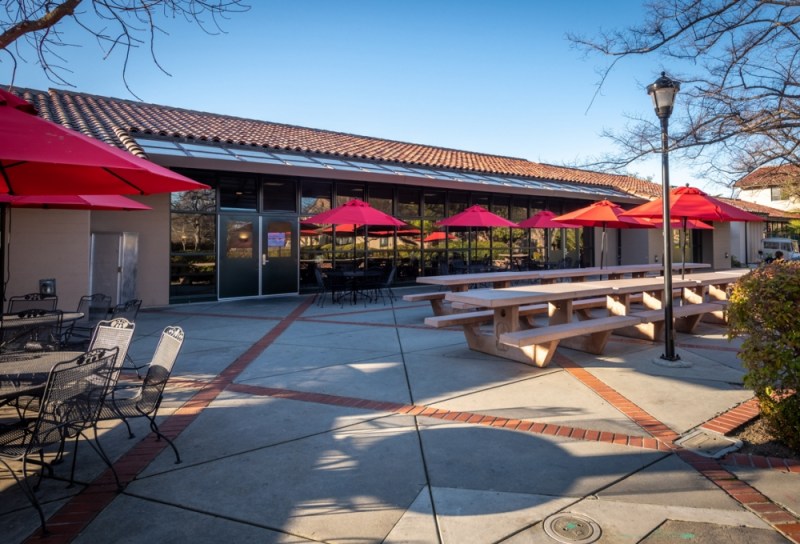Jessica Lawson is a Stanford senior majoring in human biology and minoring in creative writing.
I have had approximately 2,700 meals over my four years at Stanford University. The first half of college dining was stressful. Should I have a blueberry scone or a meat lover’s omelet? Both? Wait, but there’s a waffle with the Stanford “S” — I’ll have that. The number of choices, the variety of foods and the buffet-style layout of college dining halls left me incredibly overwhelmed. As a first-year student, I took Frosh 101 to learn about campus services and career planning paths, as well as tools to hone my study techniques. But what I really needed to learn was how to eat sustainably, for my health and the health of the planet.
The transition to college is a critical period in the formation of young-adult eating habits. Establishing a healthful and sustainable eating pattern is critical to personal and global survival. We live in a country where three-quarters of US health care spending goes to treat chronic diseases, most of which are linked to diet. We also live in a meat-centric country, consuming 225 pounds per capita in 2020. It’s no secret that agriculture, especially beef and lamb, disproportionately contribute to greenhouse-gas emissions. College campuses often act as the sole source of nutrition for students. Dining programs inevitably teach, model and reinforce eating habits — but with health and environmental crises at hand, it is critical that these eating habits are sustainable. Frosh 101 courses draw students, faculty and staff together and must be utilized to teach and practice sustainable eating.
Frosh 101 courses — also called student success, introduction to college, orientation to college or freshman experience courses — familiarize students with campus and the college experience, equipping them with tools and skills to flourish in college and beyond. The most recent estimates indicate that nine out of 10 campuses have at least one type of first-year seminar and that nearly 50% of first-year US students enroll in it. The American Association of Colleges and Universities have identified these courses as one of the 10 high-impact interventions to enhance student success. The success, popularity and relative flexibility of syllabi are a perfect method to prepare new college students to eat in a way that maximizes their health and environmental impact.
According to the International Food Information Council Foundation’s 2021 Food and Health Survey, 36% of baby boomers, 42% of Gen Z and 48% of millennials believed their individual food and beverage choices have a moderate or significant impact on the environment. We know the impact is direct. According to Project Drawdown, current emissions could be reduced by as much as 70% by adopting a vegan diet and 63% with a vegetarian diet. Even a slight reduction in the consumption of animal products has a meaningful impact on the environment.
Adopting a plant-forward diet has significant impacts on personal health, too. A 2019 study published in Nutrition Reviews found that Americans are overconsuming protein, particularly animal protein. The quality of plant-based protein is higher than most realize and easily meets human protein requirements. Additionally, plant protein contains fiber. According to the Harvard School of Public Health, fiber promotes digestive health and immunity and protects against heart disease and stroke.
The Menus of Change University Research Collaborative (MCURC) is leading university plant-forward dining efforts. Their 2021 collaboration report identified healthfulness and familiarity as top factors that influence consumer food choice. Focusing on Gen-Z consumers, culture and recommendations are especially important. All four of these important elements can be addressed in a Frosh 101 classroom setting.
Over 75% of universities identify establishing relationships between students and faculty to be among the highest-ranked objectives of Frosh 101 courses. These relationships must include university affiliated chefs, dining staff and nutritionists. Cultivating open dialogue and interactions early in the collegiate experience is likely to increase transparency surrounding the dining-hall experience as well as increase a sense of familiarity. Learning directly from a nutritionist during a lecture could dispel common myths and fears associated with college dining. Including a guest speaker related to sustainable eating would encourage students to consider the environment in their choices.
I discovered nutrition and sustainable-eating courses during my junior year at Stanford — approximately 2,000 meals too late. Undoubtedly, I would have absorbed and utilized nutritional and sustainable eating advice just as I did advice on campus tutoring and using the Stanford library system. College campuses are innovation hubs, drawing students, faculty and staff together to create solutions to wicked problems. Universities must add a sustainable eating curriculum to their first-year introductory courses. Personal, population and planetary health are intertwined and will continue to be at risk until there is change. Our eating choices have direct influences on our body and earth, eliciting immediate effects, working faster than a degree in environmental science, computer science or biology.
Sustainable eating, personal success and global success are inseparable; it’s time colleges recognize this.
